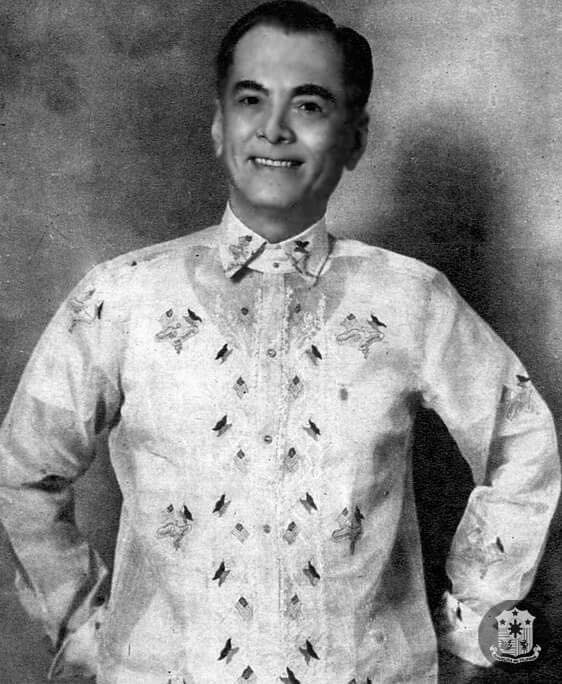What Does Barong Tagalog Shirt Mean?
Table of ContentsThe Best Guide To Barong Tagalog ShirtSee This Report about Black Barong TagalogAll about Barong Tagalog Dress

The term is usually not exploited.
Rather, the name was coined to differentiate the outfit as indigenous (therefore "tagalog", i. e. ), instead of the designs of dress of Europeans and also other foreign societies. Description [modify] Barong tagalog used with a salakot. The woman is wearing a. Barong tagalog is a formal t-shirt normally made of sheer lightweight yet tight fabric recognized as (typically woven from pia or abac fibers).
The term camisa de chino is likewise utilized for collar-less and cuff-less t shirts, called after its resemblance to t-shirts put on by Chinese laborers. It is put on with belted pants and outfit shoes. Headwear, when worn, is either a salakot or a buntal hat (and also traditionally also stovepipe hats or bowler hats). Barong tagalog can differ substantially in terms of design and also product made use of, however they share common characteristics of having long sleeves, embroidery, being buttoned (halfway or straight down the chest), and the absence of pockets. They are likewise worn loosely and also have slits on both sides. Historically, the product utilized for barong tagalog depended upon the social class of the user as well as the rule of the celebration.
Our Barong Tagalog PDFs

The high quality of the material as well as the intricacy of the embroidery were frequently indications of the status and riches of the user. The needlework of the barong tagalog are frequently put on a rectangle-shaped area on the front of the chest (recognized as pechera, "t-shirt front", from Spanish pecho, "chest"), and/or over the whole t-shirt (sabog, from Tagalog for "spread"). click this.
They can also have other type of embellishment, like alforza (pleats), suksuk (weft drifts), and also hand-painted styles - barong tagalog shirt. Periodically feminized versions are used by females, either as an egalitarian or style declaration; or as a type of power clothing when put on by women politicians (such as Corazon Aquino throughout her presidency). Among Tagalog guys, they were frequently matched look at more info with a rectangular shape of highly embellished towel called the salaual or salawal worn knee-length and also created in the center (like an Indian or Thai and also Cambodian ); while in ladies they were combined with a wraparound skirt understood as the.
Nevertheless, in the Visayas, in addition to comparable baro (which had much shorter sleeves) and salaual combinations, males likewise wore vivid robe-like and also coat-like variations that might reach well below the knees (referred to as the marlota and also baquero in Spanish, respectively). These were occasionally belted at the waistline. Among Tagalogs, red dyes and gold trimmings were indicative of being a participant of nobility () or the warrior caste () - read this.

The Only Guide for Barong Tagalog For Men
The couturier Jose "Pitoy" Moreno has assumed that this transitional design of t-shirt was the camisa de chino of later centuries, which makes it a forerunner to the barong tagalog. Representations of participants of the upper courses (including natives as well as) in the 18th century showed that they usually used European-style clothes. More Help.
These were a lot longer than the contemporary barong tagalog, reaching to a little over the knees. They were additionally commonly candy striped with strong colors like blue, red, or eco-friendly. They already showed hallmarks of the contemporary barong tagalog, consisting of being made of sheer nipis product, needlework, long sleeves, and also a loosened shape with slits on both sides.
Early instances of barong mahaba typically had high-standing collars or even Elizabethan-style ruffs with narrow cravats. Barong mahaba were generally put on with vibrant straight-cut trousers with red stripes, checkers, or plaid-like patterns (typically made from imported cambaya, rayadillo, as well as guingn fabrics), top hats (sombrero de copa), as well as a type of stitched velvet or leather slip-on shoes known as corchos. The large fabric used by barong mahaba also demanded the using of an underwear, referred to as camisn or camiseta, which was also worn on its own by citizens. By the 1840s, barong mahaba greatly fell out of fashion. In this duration, it developed right into the modern "classic" barong tagalog, being much shorter with less ostentatious folded collars, while still retaining the large textile and also other baro characteristics.